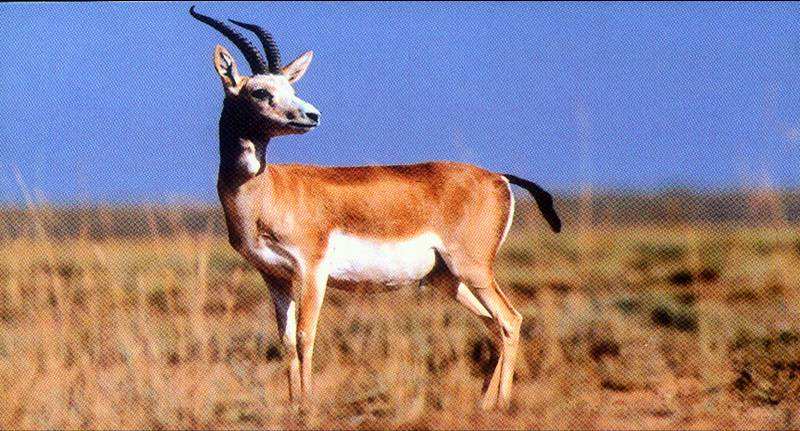Gazella subgutturosa
IUCN
LCBasic Information
Scientific classification
- name:Gazella subgutturosa
- Scientific Name:Antelope, gazelle, goitered gazelle, long-tailed gazelle
- Outline:Ungulata
- Family:Artiodactyla Bovidae Antilopinae Gazella
Vital signs
- length:90-126cm
- Weight:25-30kg
- lifetime:8-17 year
Feature
The throat becomes larger when in heat
Distribution and Habitat
The goitered gazelle is mainly distributed in Iran, Afghanistan, and Pakistan. The Junggar Basin in Xinjiang, China, the desert from the Yarkand River Basin to Lop Nur, is the habitat of the goitered gazelle.
In my country, it is distributed in the Inner Mongolia Autonomous Region and the Northwest region.
Appearance
The neck of the goiter is thin and long. The male has a goiter under the neck, which looks like a goose throat, so it is called the goiter. The upper body fur is sandy yellow or brownish yellow, the snout from the upper lip to the eye level is white, and some individuals are slightly stained with brownish yellow. The forehead, between the eyes to the base of the horns and the occipital area are all brown-gray, with a little black hair in between. The outside of the ears is sandy yellow, and the lower lip and the midline of the throat are also white, which is connected to the white of the chest, abdomen and inner side of the limbs.
The goiter is mostly active during the day and often forms small groups of several to dozens of individuals. They are good at running and sightseeing, and feed on plants such as grass.
Details
The goitered gazelle is a typical animal that lives in desert and semi-desert areas. It is shaped like a gazelle and is good at running. The male gazelle's throat is enlarged during the estrus period, resembling a goose's throat, hence the name "goitered gazelle". The swelling of the throat will not go down until after mating. If they cannot find the opposite sex to mate with, they will walk with their necks tilted, which is especially troublesome when eating grass, as the enlarged throat cannot allow them to lower their heads to eat grass.

There are many goitered gazelles in Xinjiang. Kazakh herders call them "Karakeyi Luke", which means "black-tailed sheep". They have brown fur and white abdomen. Only the tail is black, and it is extremely conspicuous. Not only that, they often shake their tails, flashing a terrifying black light.
More often, goitered gazelles are busy foragers. In order to eat fresh grass leaves, they follow the green and run wherever there is green. The summer in the Gobi Desert is extremely hot, so goitered gazelles choose to forage in the early morning and dusk. They often set out in the middle of the night, walk to a place with grass and water in the early morning, start eating grass and drinking water, and avoid the scorching sun when the sun comes out and return to the resting place. The distance between their feeding and resting places varies, but they must go back every day, rest until the sun sets, then walk to a place with grass and water, start feeding again, and then return again at night.
Goitered gazelles have a unique life phenomenon. In summer, their fur colors are dark brown, white, and black, but in winter, their fur color suddenly changes from dark to light, and their entire body becomes sandy brown, the same color as the Gobi Desert where they live. It is precisely because of this protective color that they can hide calmly and avoid being attacked by natural enemies.
Goitered gazelles are extremely sensitive and will run away at the slightest sign of trouble. When they run on flat ground, they are mostly fan-shaped, and the vast Gobi Desert is combed by them like a comb. In this respect, they are very similar to Genghis Khan.
According to a sample survey by relevant departments, Xinjiang has 150,000 to 200,000 goitered gazelles. From 2003 to 2012, the 9-year "fence effect" has caused the population of goitered gazelles in northern Xinjiang to drop by more than 50%.
Listed in China's "National Key Protected Wildlife List" China Key List — Level II.
Listed in the 2013 Red List of Endangered Species of the World Conservation Union (IUCN) ver3.1 — Endangered (EN).
Listed in Appendix I of the Convention on International Trade in Endangered Species (CITES).
Protect wild animals and stop eating game.
Maintaining ecological balance is everyone's responsibility!








